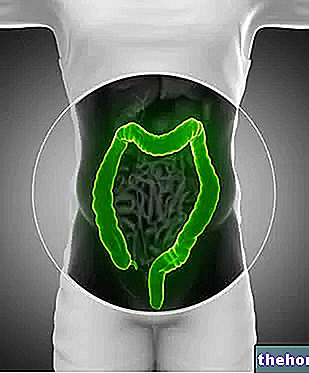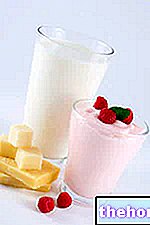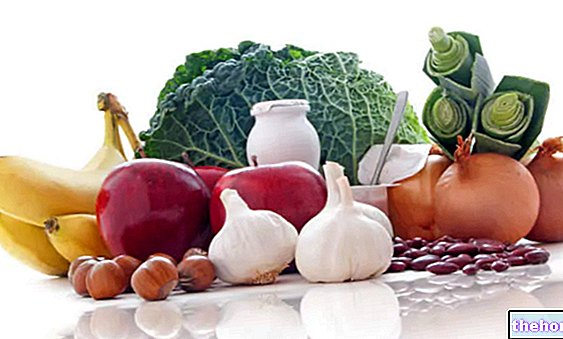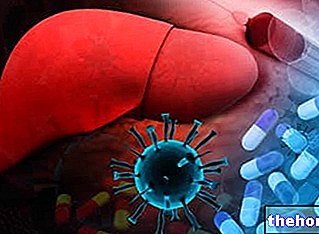Edited by Doctor Francesco Casillo
HDLs remove cholesterol from the vascular walls thus favoring the patency of the vessel lumen, while LDLs determine the exact opposite, favoring vessel occlusion.
Hence the item "total cholesterol" to which considerable attention is normally paid when reading haematological tests does not reveal the relative risk, which is instead the prerogative of its two subfractions; therefore the uni-factorial evaluation of the blood lipid situation focused on the sole item of "total cholesterol" is not exhaustive in highlighting the arterogenic potential of the same, but is sufficient to "hasten" misleading conclusions, sometimes concealing a real risk and other times falsely alarming, therefore conditioning, without knowledge of the facts, the food manipulations aimed at the vain reduction of its absolute levels.
In fact, it should be noted that, contrary to the widespread and common belief that has earned cholesterol a bad reputation for its harmful effects on the safety of the vascular tissue, the variations in the dietary intake of cholesterol have a minimal influence on cholesterol variations (cholesterol in the blood); this is because compensation mechanisms are called into question in order to modulate its serum levels, such as "hyperactivity of HDL" in "eliminating" excess cholesterol or "down-regulation of the endogenous synthesis of cholesterol "induced by the" dietary intake of the same2.

Fig B shows the sequence of the phases that occur in the biosynthesis of cholesterol as well as the negative feedback exerted by circulating cholesterol (highlighted by the - sign) on the "enzyme" HMG-CoA reductase "catalyzing the regulatory-limiting passage (HMG-CoA → Squalene) in the biosynthesis of cholesterol 2.
The results of the first researches led to the conclusion that saturated fatty acids have a hypercholesterolemic action, polyunsaturated hypocholesterolemic ones and monounsaturated ones a neutral action in this regard2.
Current researches, on the other hand, have focused attention no longer on the effects induced by different fatty acids on cholesterol but on their influence in shift in positive or negative the LDL / HDL ratio. A dietary lipid intake rich in mono and polyunsaturated fatty acids has been observed to cause a decrease in serum LDL and triglyceridemia levels without significant changes in HDL3,4.
A study is cited below (there are several others that are not reported due to space requirements) to make it even clearer how the "uniting under the same class (LIPIDS) more sub-classes (FATTY ACIDS) responds only to one a purely classification requirement due to their interstructural and non-biological-functional similarities.
More precisely, it will be noted that lipid molecules, although always characterized by a caloric intake of 9kcal per gram, have different effects on various parameters.
One study highlighted changes in the lipid profile of a group of subjects who ate a diet with 40% fat for 29 days, of which 75% were added fat in the form of a mixture of MCTs (Medium Chain Triglycerides). ), phytosterols, and linseed oil and for another 29 days they assumed the same lipid intake but from olive oil.
The total concentration of blood cholesterol decreased by 12.5% with the lipid mixture and by 4.7% with the olive oil. In a very similar way, the oil mixture recorded a 13.9% decrease in the LDL fraction where on the other hand, the "olive oil" had no effect in this regard5.
Fats fall within the context of a qualitative differentiation not only in terms of different repercussions on the cardiovascular system but also in terms of thermogenic-lipolytic effects (i.e. to promote heat production and induce a "fat burning" effect) although their yield energy is always 9 kcal / g.
It has been found that the replacement of long-chain fatty acids (LCT) in favor of medium-chain fatty acids (MCT) leads to weight loss, an increase in the oxidation of fatty acids in the adipose tissue and at the same time an increase in energy expenditure due to increased thermogenesis without altering the cardiovascular safety parameters.
This was evident in a double-blind study comparing the effects on body weight and body fat induced by medium-chain fatty acids (MCT) versus long-chain fatty acids (LCT) in a sample of 78 people. healthy for a period of 12 weeks, in the calculation of a daily dietary context of 2205 kcal whose pro-die lipid intake was 60 g. Of the 78 volunteers, 41 consumed MCTs, while the remaining 37 consumed LCT within their pro-die lipid quota. Total pro-die caloric, protein and carbohydrate intake did not differ between groups.
Weight and body fat decreased in both groups at the end of the 4th, 8th and 12th week of the study; but subjects consuming MCTs recorded a greater significant decrease in body weight than the group consuming LCT; again, body fat loss was significantly greater in MCT-treated subjects than in the LCT-treated group. These results suggest that a dietary approach whose lipid source derives from MCT has favorable effects on the decrease in body weight and fat mass compared to what occurs with LCT6.
More articles on "Effects of a low-glucose, hyperlipid, low-calorie diet on CVD prevention"
- Atherogenesis, the process of atherogenesis
- Fats, health and atherosclerosis
- Fats, diet and prevention of atherosclerosis
- Atherosclerosis prevention: hypolipidic, hypocaloric hyperglucidic diet VS hyperlipidic, hypoglucidic, hypocaloric diet
- Low Fat Diet and Cardiovascular Risk
- Fats and health: conclusions




























